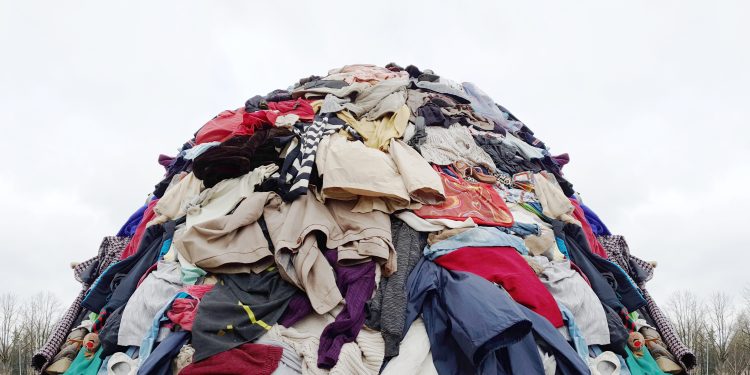Fast fashion is everywhere – in just about every mall, in the feeds of influencers on social media promoting overconsumption, and in ads constantly popping up online.
Its focus on the continual production of new clothing is marked by speedy fashion cycles that give it its name. Fast fashion is intended to quickly copy high-end designs, but with low-quality materials, resulting in poorly made clothing intended to be worn once or twice before being thrown away.
One of fast fashion’s leading companies, Zara, has a mission to put clothes in stores 15 days after the initial design. Another, Shein, adds up to 2,000 new items to its website daily.
While others in the fashion industry are working toward more sustainable clothing, fast fashion is focused on profit. The market’s value was estimated at about US$100 billion in 2022 and growing quickly. It’s a large part of the reason global clothing production doubled from 2000 to 2014.
About 60% of fast-fashion items are made from synthetic textiles derived from plastics and chemicals that start their life as fossil fuels. When this synthetic clothing is laundered or thrown in landfills to decompose, it can release microplastics into the environment. Microplastics contain chemicals including phthalates and bisphenol A that can affect the health of humans and animals.
Natural fibers have their own impacts on the environment. Growing cotton requires large quantities of water, and pesticides can run off from farmlands into streams, rivers and bays. Water is also used in chemically treating and dyeing textiles. A 2005 United Nations-led report on cotton’s water use estimated that, on average, a single cotton T-shirt requires about 700 gallons (2,650 liters) of water from crop to clothing rack, with about 300 gallons (1,135 liters) of that water used for irrigation.
Fast fashion’s high output also creates literally mountains of waste. More than 90 million tons of textile waste ends up in landfills globally each year, by one estimate, adding to greenhouse gases as it slowly decomposes. Only a small percentage of discarded clothing is recycled.
Some governments are also taking steps to reduce waste from fashion and other consumer products. The European Union is developing requirements for clothing to last longer and prohibiting companies from throwing out unsold textiles and footwear. France has pending legislation that, if passed, would ban publicity for fast-fashion companies and their products, require them to post the environmental impact of their products, and levy fines for violations.
Changes in consumer habits, new technologies and legislation can each help reduce demand for unsustainable fashion. The cost of cheap clothes worn a few times also adds up. Next time you buy clothing, think about the long-term value to you and the planet.
Read the full article by Paula M. Carbone here












